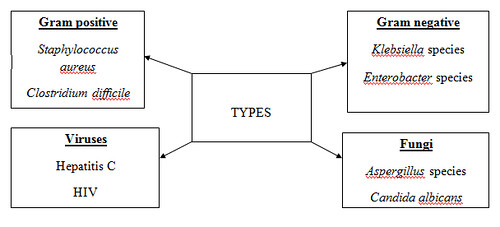When the physical activity of patients is increased step by step (whether they are young or old), their immunity also improves dramatically. They are not prone to infections acquired from the hospital premises, known as nosocomial infections. Severe pneumonia and UTI and bloodstream infections arise due to nosocomial infections [2].
They appear within 48 hours of admitting a patient in a hospital or 30 days after the patient gets discharged [3].
STATISTICS:
1. The frequency of infection acquired from the ICU, in low income countries and India is 2 to 3 times more than that encountered in the US.
2. The percentage of patients in developed countries, who suffer from nosocomial infections fall in between 3.5% to 12%.
3. Nosocomial infections are responsible for 75% of all neonatal deaths in South-East Asia and Sub-Saharan Africa [4].
4. The US loses 99,000 citizens every year, due to nosocomial infections and the financial burden is $20 billion on the economy.
5. Europe can't be left far behind, the casualties being 25,000 every year.
6. In India, the Ministry of Health & Family Welfare (MOHFW) doesn't study the spread of nosocomial infections as it finds the whole exercise unfeasible. Till date, there has been no compulsory reporting of nosocomial infections in the Indian healthcare system [3], [5], [6].
HISTORY:
Person | Event
• Hippocrates | Said Primum non nocere- the foremost step of a doctor should be to do no harm to the patient.
• Florence Nightingale | Talked about the nosocomial infections that were widespread in her hospital due to poor sanitation.
• Dr Ignaz Semmelweis | Spread of puerperal fever inside maternity wards mainly due to the hospital staff.
Story in the 20th-21st century:
Year | Event
• 1950s | National Nosocomial Infection Surveillance System was established by the Center for Disease Control and Prevention in the US.
• 2005 | American hospitals began to give their data to the National Healthcare Safety Network. Many countries in the global arena are signatory to the pledge of WHO's First Global Patient Safety Challenge [6]
VARIOUS ORGANISMS RESPONSIBLE [3]:

RISK FACTORS:
1. Extended hospital admissions of the patient.
2. Invasive methods that necessitate the use of equipments such as catheters.
3. Not much importance attached by the healthcare personnel in maintaining their personal hygiene.
4. Unrestricted use of antibiotics that may lead to microbial resistance.
5. Round-the-clock use of mechanical ventilation such as ACs not cleaned over a long period of time [3].
STRATEGIES OF VARIOUS COUNTRIES AGAINST NOSOCOMIAL INFECTIONS:
1. USA:
In the US, it has now been made mandatory for all the hospitals to put their data in the public domain which, was accessed solely by the hospital personnel till now. This step has been undertaken with an intention to bring down the prevalence of infections among populations. Payment of the healthcare workers will now be done according to their performance. From October 2008, hospitals have been prevented from transferring the cost of nosocomial infections onto the patients' bills. Overhaul of various strategies for controlling infection is done during the accreditation of healthcare organizations by a joint commission. From the point of view of patients: if nosocomial infections can be avoided more number of patients can be admitted in place of the previous ones [7].
2. Australia:
In Australia, an Infection Prevention and Control Committee consisting of many disciplines overhauls and shows the way for a particular healthcare establishment in carrying out its strategies to curb the effect of nosocomial infections. This committee has a framework in place to look into the feedback and experiences of patients in various departments. There is also an update of its reporting activities on a daily basis. Collaboration should exist between the personnel of the Infection Prevention and Control Committee and the respective health administrators in that area.
Risk management is an important aspect in preventing nosocomial infections. The following steps are the Australian/New Zealand Standard on Risk Management-
a. Establishing the context
b. Avoiding risk
c. Identifying risks
d. Analyzing risks
e. Evaluating risks
f. Treating risks [8]
3. Canada:
In Canada, the Canadian Nosocomial Infection Surveillance Program is in place which has the participation of the Canadian Hospital Epidemiology Committee and the Centre for Communicable Diseases and Infection Control of the Public Health Agency of Canada. Different guidelines are issued for various diseases so that all the stakeholders can take appropriate measure to prevent nosocomial infections [9], [10].
REFERENCES:
1. http://newoldage.blogs.nytimes.com/2011/06/08/trapped-in-the-hospital-bed/?_r=0
2. http://en.wikipedia.org/wiki/Hospital-acquired_infection
3. Singh A. Nosocomial Infection. Website:
http://www.slideshare.net/amarjit38/nosocomial-infection-7577087
4. World Health Organization: FACT SHEET. Website:
http://www.who.int/gpsc/country_work/gpsc_ccisc_fact_sheet_en.pdf
5. http://www.cdc.gov/washington/~cdcatWork/pdf/infections.pdf
6. Chugh T D. Hospital Infection Control- Are we serious? Medicine Update. 2012; 22: 74-77.
7. Reed D, Kemmerly S A. Infection control and prevention: A review of hospital-acquired infections and the economic implications. The Ochsner Journal. 2009; 9: 27-31.
8. Australian Commission on Safety and Quality in healthcare. Australian Guidelines for the Prevention and Control of Infection in healthcare.
Website:
http://www.nhmrc.gov.au/_files_nhmrc/publications/attachments/cd33_complete.pdf
9. http://www.phac-aspc.gc.ca/nois-sinp/survprog-eng.php
10. http://www.phac-aspc.gc.ca/nois-sinp/guide/pubs-eng.php
About Author / Additional Info: